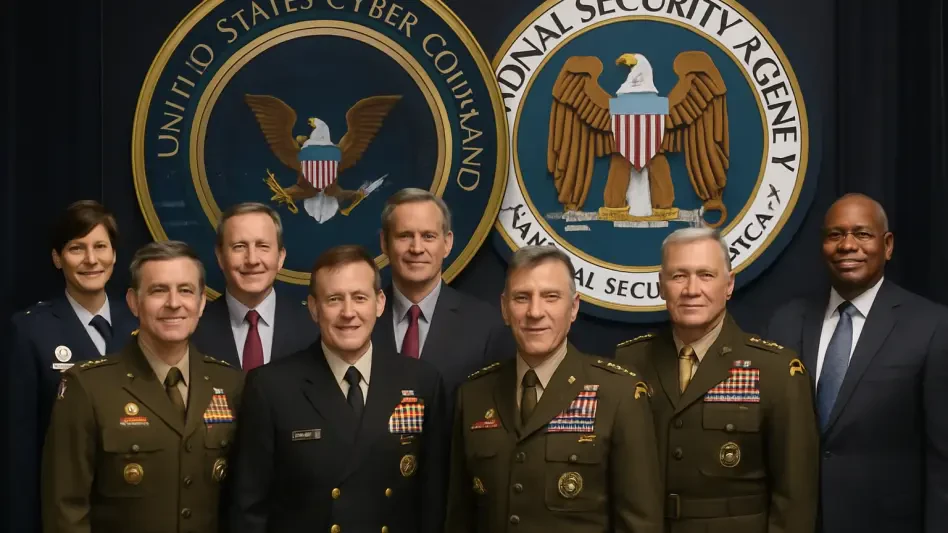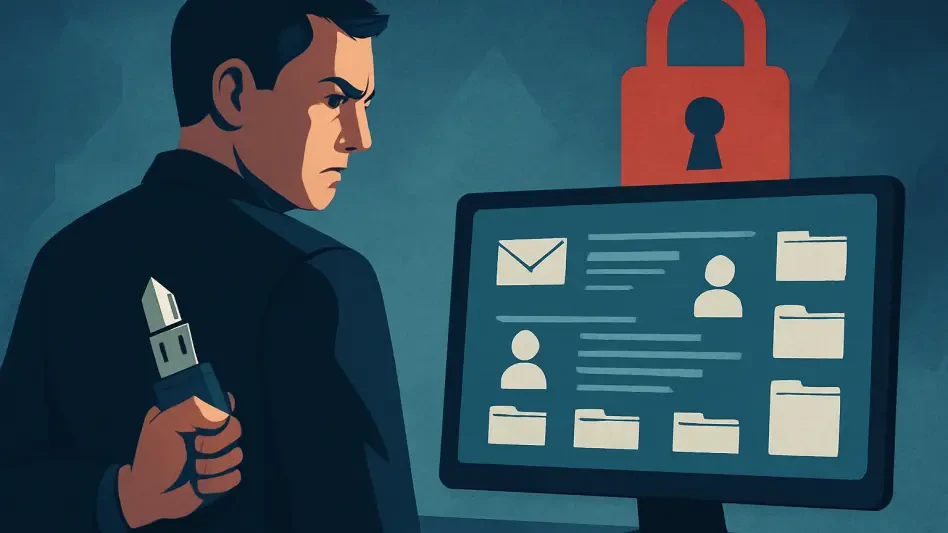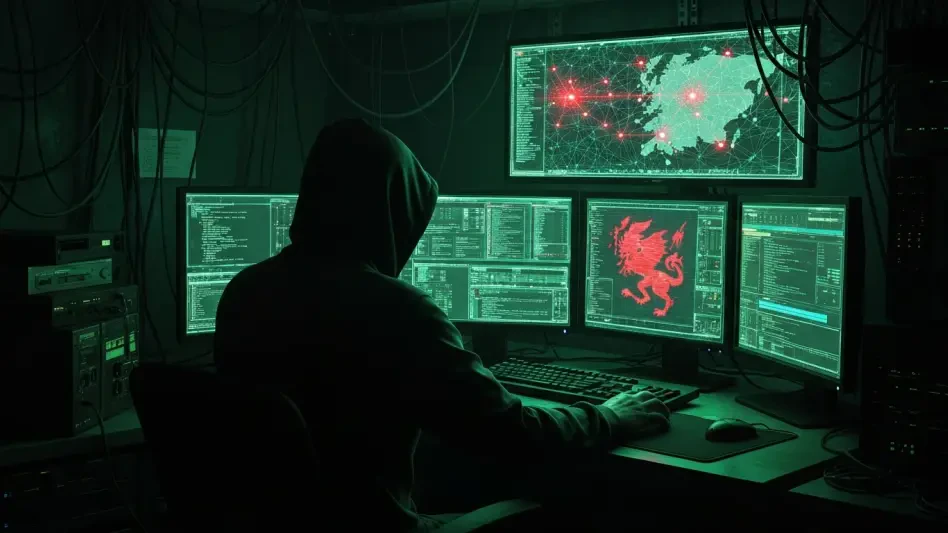In an era where cyber threats loom as large as physical warfare, a critical decision has emerged from the highest levels of government, shaping the nation’s defense strategy. Picture a digital battlefield where state-sponsored hackers infiltrate critical infrastructure while military drones are downed over allied territories, and amidst this chaos, the United States must rely on two powerhouse agencies—U.S. Cyber Command and the National Security Agency (NSA)—to defend against invisible enemies. Yet, a single leader oversees both, a structure known as dual-hat leadership. Why has the Trump administration chosen to maintain this controversial arrangement in 2025, when global tensions demand razor-sharp focus on national security?
The significance of this decision cannot be overstated. With cybersecurity incidents spiking—reports indicate a 68% increase in state-sponsored attacks since 2025—America’s defense mechanisms must operate seamlessly. The dual-hat structure, where one individual commands both the military might of Cyber Command and the intelligence prowess of the NSA, has been debated for over a decade. This choice reflects not just administrative preference but a strategic stance on how best to safeguard the nation during a time of escalating digital and geopolitical risks.
Why Does One Leader for Two Agencies Still Stir Controversy?
The persistence of a single leader for both Cyber Command and the NSA remains a lightning rod for discussion among security experts and policymakers. On one side, proponents argue that unified leadership ensures rapid coordination between military cyber operations and intelligence gathering, a necessity when threats evolve by the hour. On the other hand, critics contend that the dual role creates a dangerous concentration of power and risks muddling distinct missions—one focused on offense, the other on surveillance.
This debate isn’t merely academic; it touches on real-world consequences. A split could potentially sharpen each agency’s focus but might also fracture the synergy needed to counter sophisticated adversaries like state-backed hackers from hostile nations. As global tensions mount, with incidents like NATO’s interception of foreign drones over European borders, the stakes of this structural decision have never been higher.
The Trump administration’s stance, therefore, isn’t just a bureaucratic footnote. It’s a calculated gamble that maintaining the status quo offers more stability than reform, even as voices in Congress and beyond continue to question whether one person can—or should—wield such immense authority over America’s digital defenses.
The Dual-Hat Model: A Unified Front with Deep Roots
Tracing back to 2010, the dual-hat leadership model was born from necessity when Cyber Command emerged as a military counterpart to the NSA’s intelligence operations. This intertwined structure was designed to leverage the NSA’s vast data-gathering capabilities to bolster Cyber Command’s ability to strike back at digital foes. The logic was simple: in a world where cyber warfare blurs into espionage, a single leader could bridge the gap between these overlapping domains.
Today, that logic still holds weight amid complex international conflicts. Consider recent military actions, such as Israel’s operations in volatile regions or NATO’s defensive maneuvers against unauthorized aerial incursions. These events underscore how cyber threats often accompany physical confrontations, requiring a seamless blend of intelligence and action. Splitting the leadership could disrupt this balance, potentially leaving gaps in response times or strategic alignment.
Yet, the model isn’t without flaws. The sheer scope of responsibilities under one leader can strain resources and decision-making, especially when budgets and personnel are stretched thin. Despite these concerns, the historical precedent of unity continues to shape the administration’s thinking, framing the dual-hat role as a cornerstone of national security architecture.
Behind Trump’s Choice: Prioritizing Stability in Turbulent Times
Delving into the rationale for upholding the dual-hat structure, the Trump administration has opted for continuity over change, driven by pragmatic concerns. Separating the roles of Cyber Command and the NSA would demand significant resources and time—estimates suggest a multi-year process involving billions in funding and extensive reorganization. Such an overhaul risks diverting attention from pressing foreign policy challenges, including heightened tensions with adversarial states.
Bipartisan support in Congress further bolsters this decision, with lawmakers on both sides acknowledging the impracticality of reform amidst current global instability. Security experts echo this sentiment, emphasizing that a unified command structure enables faster responses to crises, a critical advantage when every second counts in cyberspace. One anonymous analyst noted, “Splitting the roles now would be like rearranging deck chairs on the Titanic while it’s sinking—disaster waits for no one.”
This choice also reflects a broader strategic calculus. With international flashpoints multiplying—from drone skirmishes to cyber espionage campaigns—the administration appears to view structural stability as a shield against chaos. The focus remains on tackling immediate threats rather than embarking on a risky administrative experiment.
Leadership Shifts: Navigating Power and Politics
Recent transitions within the dual-hat role reveal the intricate interplay of politics and security at the highest levels. Following the dismissal of Lt. Gen. Timothy Haugh earlier this year, Lt. Gen. William Hartman stepped into the interim position, guiding both Cyber Command and the NSA through a period of uncertainty. His steady hand has drawn quiet praise from within the Pentagon, though the path to permanent leadership remains fraught with tension.
A notable wrinkle emerged when the nomination of Lt. Gen. Richard Angle, backed by Defense Secretary Pete Hegseth and Director of National Intelligence Tulsi Gabbard, was rejected by the White House. This move sparked speculation about internal disagreements over the direction of cyber policy. However, sources suggest that Trump is poised to formally appoint Hartman soon, signaling confidence in his ability to manage the dual responsibilities during a volatile era.
Expert commentary highlights the importance of continuity in such transitions. An unnamed security strategist remarked, “Leadership changes are inevitable, but a unified command ensures the mission doesn’t falter, even when the faces at the top shift.” This perspective underscores why the administration seems intent on maintaining a steady course, even as political dynamics swirl around the role.
Cyber Defense and Public Impact: Key Takeaways for Awareness
For the average citizen, the dual-hat structure might seem like a distant bureaucratic detail, but its implications ripple into everyday life. Understanding this setup starts with recognizing the distinct yet interconnected missions of Cyber Command, which focuses on military cyber operations, and the NSA, tasked with intelligence collection. A single leader streamlines decisions during crises, ensuring that data gathered by one agency can instantly inform actions by the other—a vital edge in thwarting attacks on critical infrastructure like power grids or financial systems.
Beyond comprehension, staying informed offers a practical way to engage with this issue. Monitoring congressional hearings on cybersecurity or tracking policy updates from federal agencies can reveal shifts in priorities or resources that affect national safety. Leadership appointments, such as Hartman’s likely confirmation, often serve as indicators of the administration’s broader security agenda, providing clues about future strategies.
Ultimately, the public plays a role in this narrative by advocating for transparency and accountability. As cyber threats grow—evidenced by a reported 40% rise in ransomware attacks on U.S. entities since last year—awareness of how defense structures operate becomes essential. Keeping abreast of these developments equips individuals to demand policies that balance efficiency with robust protection in an increasingly digital world.
Reflecting on a Strategic Stand
Looking back, the Trump administration’s decision to retain the dual-hat leadership for Cyber Command and the NSA stood as a defining moment in navigating a landscape of digital and global threats. It prioritized stability over reform, reflecting a calculated response to the immense challenges of restructuring during a period of international unrest. The move, backed by bipartisan consensus and expert input, ensured that Lt. Gen. William Hartman’s steady guidance continued to steer both agencies through turbulent waters.
Moving forward, attention must shift to strengthening this unified framework while addressing its inherent strains. Investments in cybersecurity training and technology could alleviate the burden on a single leader, enhancing the capacity to counter evolving threats. Additionally, fostering public dialogue on the balance between centralized power and specialized focus will be crucial in shaping future policies.
As the digital frontier expands, the lessons from this decision remind policymakers and citizens alike to remain vigilant. Supporting initiatives that bolster resilience—whether through funding for cyber defenses or advocating for transparent governance—offers a tangible path toward safeguarding national interests. The road ahead demands adaptability, ensuring that unity in leadership translates into enduring security for all.








